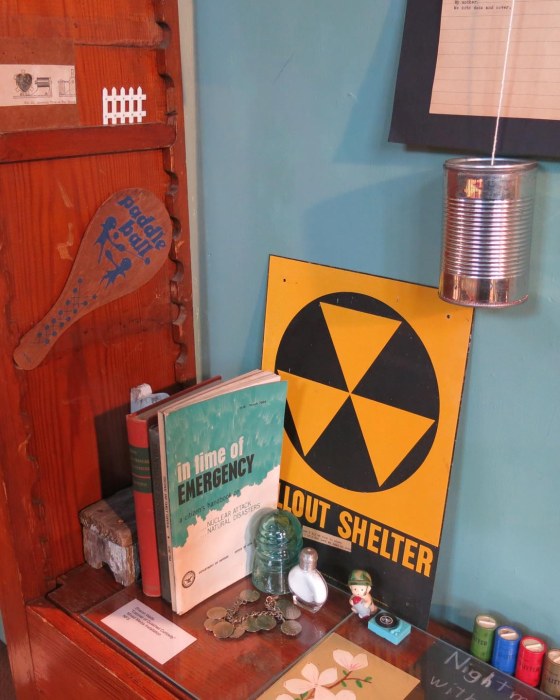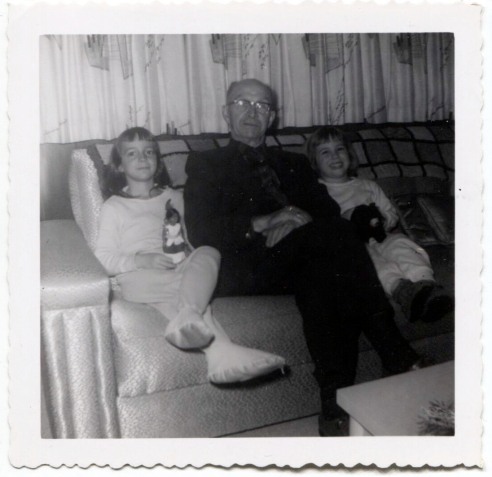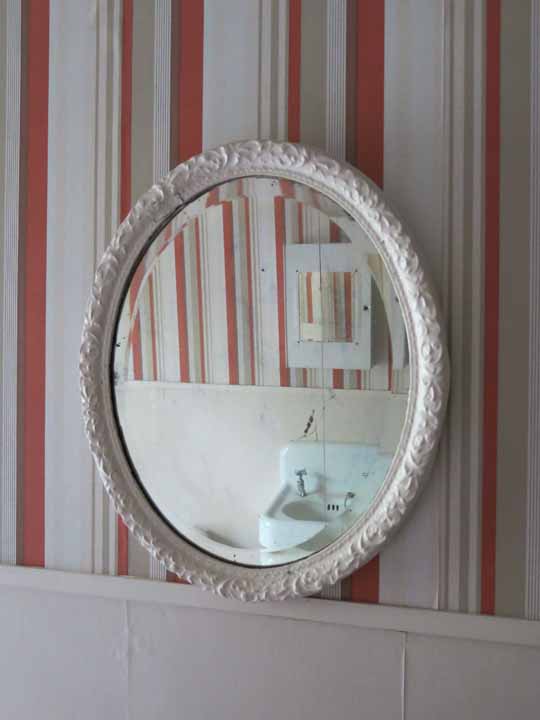I recently submitted a proposal and was accepted into a curated group exhibit for Women’s History Month at the Howland Cultural Center, here in Beacon, NY. The topic was enticing: Girlhood. Oh boy, was this ever custom-meant for me and my kind of personal art! One foot is always in my girlhood.

Looking back all these years, I assume that I asked questions from the time I learned to talk—what child is not curious? My nuclear family really was perfect, so I know when the answers stopped coming. My father simply disappeared from my life, in 1957, and my big question was Where’s Daddy? What I remember first was being in our linoleum-floored kitchen with my grandparents and asking Why is Mommy crying? I have no memory of having his death (electrocution on the job as utility pole lineman) explained to me, or going to a funeral, or ever being comfortable asking questions or talking about any of it with my mother. Not until lately.
With the recent escalation of a nuclear pissing contest between Donald Trump and Kim Jong-un, I found myself having a bit of PTSD. Childhood fears are being resurrected from the Cold War. I grew up in the era of “Duck and Cover,” and here we are again. Of course, ducking and covering was a joke, but the threat itself was very real, and still is. The idea that we could simply hide under our desks to avoid the blast—who knew how ludicrous that was back then? Answer: A lot of people in high governmental positions. But that’s the propaganda pablum they fed us. And I was very frightened, especially when Nikita Krushchev thundered on our black-and-white television sets: WE WILL BURY YOU!

Old electrical manuals and my civil defense booklets from the 1960s, a charm bracelet with the ten commandments, glitter, some toys, and my childhood art
Where did I find solace and a sense of safety? That is what makes up this installation. Sifting through a lifetime of personal archival material, as well as trinkets I’ve collected for my assemblage art (that connected me nostalgically to my childhood), I address my unanswered questions, my fears, and how I navigated my girlhood—steeped in family love, but also loss.

More vestiges of growing up in the 1950s & 60s along with a very early book of poems

Prayers weren’t working for me, so I switched to Mighty Mouse. “Here I come to save the day!” Gauges and gee-gaws. My childhood bank. A buddhist prayer flag with my questions.
At the center of the installation is my first assemblage art done in 1996. That was when I began to seriously address my past and how I became who I am today. No longer afraid to ask questions. Now I also write poetry to make peace with what I may never find out.

DEFENSIVE MEMORY
I ask now what you remember.
For me:
Air raid sirens pierce arithmetic lessons as we
practice for nuclear war.
My classmates and I scramble
under wooden desks:
girls’ plaid skirts tenting pale knees scabbed at recess and
even the boys are quiet.
Spitballs at a cease fire.
You say you don’t remember much.
A hint:
Did you ask me what I learned in school that day and did
I already know not to
disturb you with my fears?
I almost forgot:
Got a hundred per cent on a spelling test and
Mike Clark ate a red crayon.
And I can’t sleep at night.
Copyright Sharon Watts 2018






































